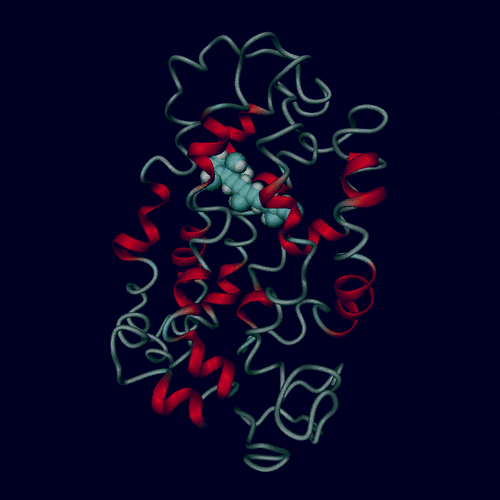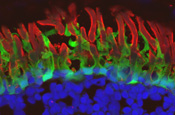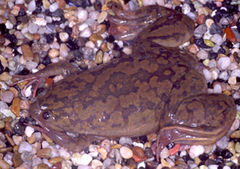Moritz Lab | Research Projects
Mechanisms Underlying Photoreceptor Cell Death in Retinitis Pigmentosa
Retinitis pigmentosa is genetically heterogenous, with many different mutations in different genes involved. Within the rhodopsin gene, over 100 different mutations have been implicated in retinitis pigmentosa or related disorders. One of our goals is to determine whether these diverse mutations cause disease by identical or different mechanisms. This will help us to design therapies for retinitis pigmentosa, and will allow us to determine which RP patients could be treated by a single therapy.
Biosynthesis, Targeting and Transport of Membrane Proteins to Sensory Cilia
Like many other sensory neurons, the rod photoreceptor concentrates its sensory receptors (rhodopsin) in a non-motile cilium (the rod outer segment). A similar arrangement is observed in other photoreceptors, olfactory neurons, and many other systems.
The rod photoreceptor is unique in that it contains enormous quantities of a single protein (rhodopsin) which is turned over extremely rapidly. Therefore, rod photoreceptors are an excellent cell type to examine the processes by which receptors are transported to sensory cilia.
Interestingly, many of the rhodopsin mutations responsible for retinitis pigmentosa prevent proper delivery of the receptor to the rod outer segment.
Remodeling of the Retina in Response to Photoreceptor Cell Death
Although we know that mutations in the rhodopsin gene are responsible for retinitis pigmentosa, it is not clear why they cause such extensive damage to the retina. Rhodopsin is only found in rod photoreceptors, which are primarily responsible for night vision, but the normal daylight vision of RP patients is also affected. Therefore, other cell types such as cone photoreceptors must also be indirectly affected by these mutations.
We are investigating the responses of cones and other retinal cell types in the X. laevis retina to rod cell death. We are also interested in the potential capacity of the X. laevis retina to regenerate lost photoreceptors, or other retinal cell types.

Rhodopsin - the photosensitive pigment of rod cells. Mutations in the gene encoding rhodopsin cause retinitis pigmentosa.
Read more >

Retinitis Pigmentosa - an inherited form of blindness characterized by accumulation of dark pigment in the retina.
Read more >

Rod and cone photoreceptors in the X. laevis retina visualized by confocal microscopy.
Read more >

Xenopus laevis- our principle experimental model and favorite amphibian.
Read more >
